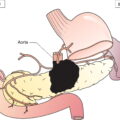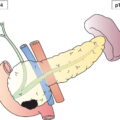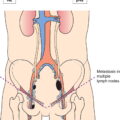The classification applies only to carcinomas, excluding Merkel cell carcinoma. There should be histological confirmation of the disease and division of cases by histological type. The regional lymph nodes are those appropriate to the site of the primary tumour. See Regional Lymph Nodes under Skin Tumours. *Deep invasion is defined as invasion beyond the subcutaneous fat or > 6 mm (as measured from the granular layer of adjacent normal epidermis to the base of the tumour), perineural invasion for T3 classification is defined as clinical or radiographic involvement of named nerves without foramen or skull base invasion or transgression. Note The pT, and pN categories correspond to the T and N categories. Note
CARCINOMA OF THE SKIN (EXCLUDING EYELID, HEAD AND NECK, PERIANAL, VULVA, AND PENIS) (ICD‐O‐3 C44.5–7, C63.2)
Rules for Classification
Regional Lymph Nodes
TNM Clinical Classification
T – Primary Tumour
TX
Primary tumour cannot be assessed
T0
No evidence of primary tumour
Tis
Carcinoma in situ (Fig. 329)
T1
Tumour 2 cm or less in greatest dimension (Fig. 330)
T2
Tumour > 2 cm and ≤ 4 cm in greatest dimension (Fig. 331)
T3
Tumour > 4 cm in maximum dimension or minor bone erosion or perineural invasion or deep invasion* (Fig. 332)
T4a
Tumour with gross cortical bone/ marrow invasion,
T4b
Tumour with axial skeleton invasion including foraminal involvement and/or vertebral foramen involvement to the epidural space.
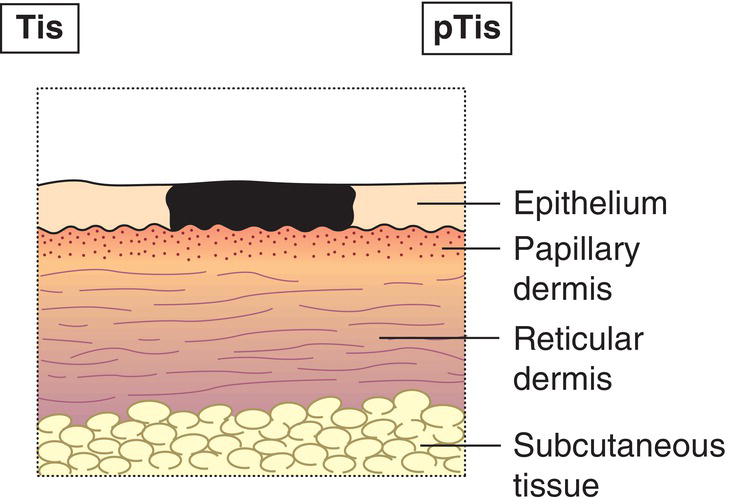
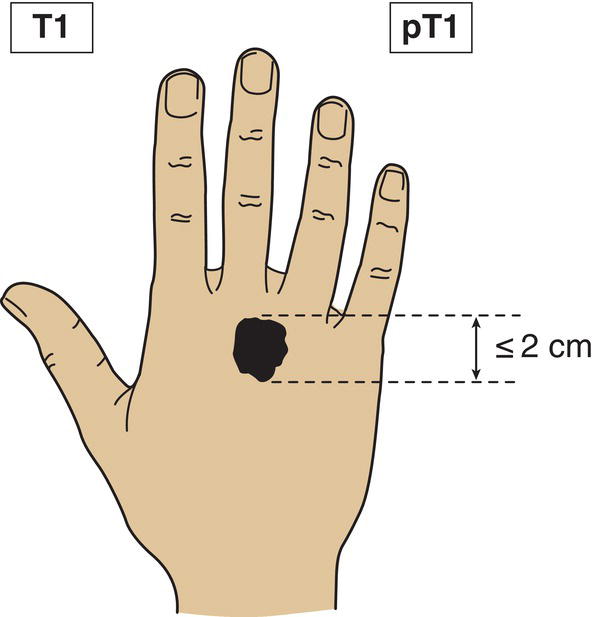
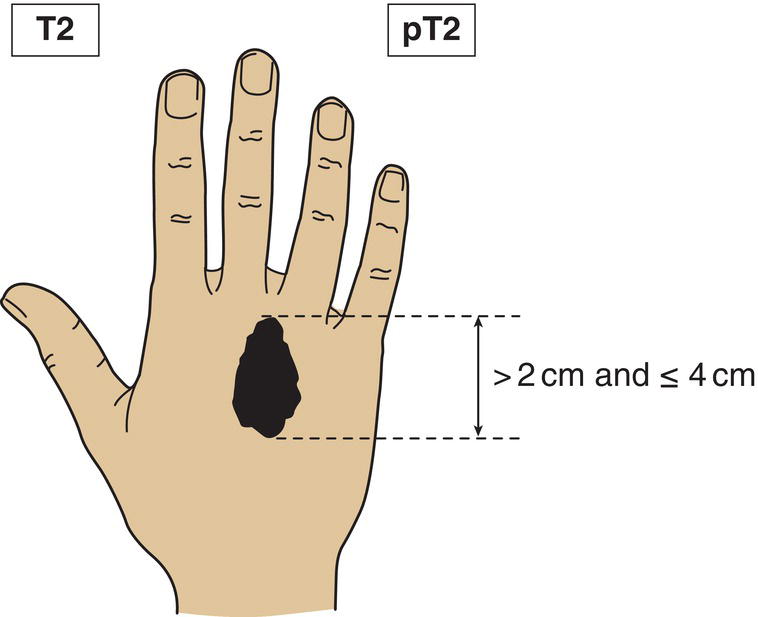
In the case of multiple simultaneous tumours, the tumour with the highest T category is classified and the number of separate tumours is indicated in parentheses, e.g., T2(5) (Fig. 333)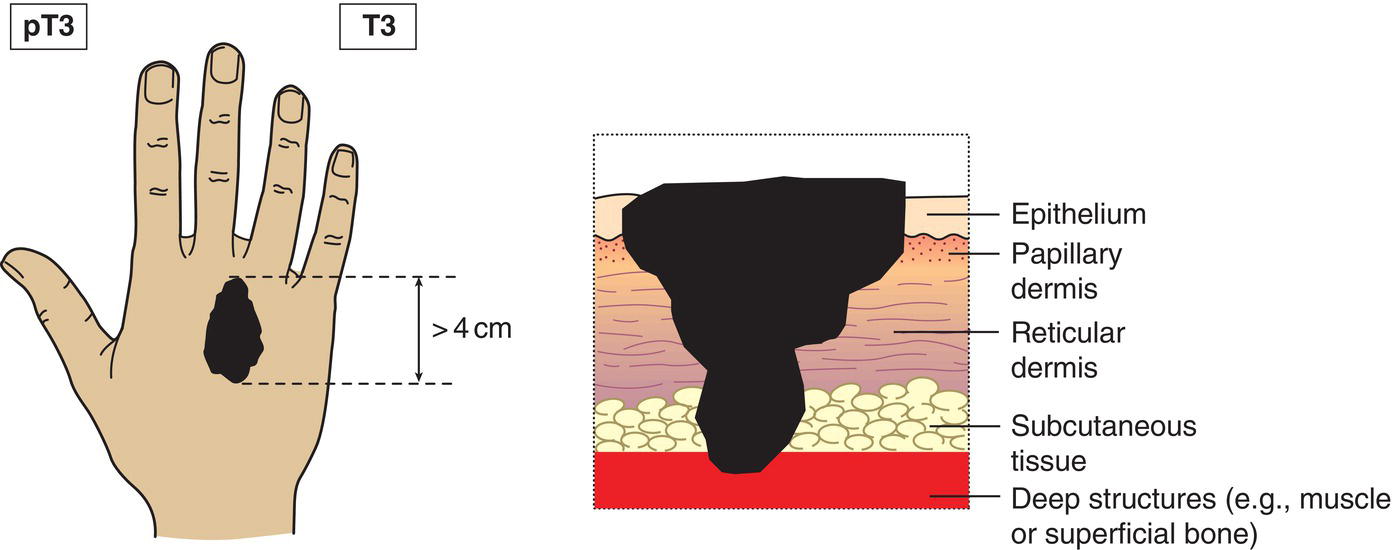
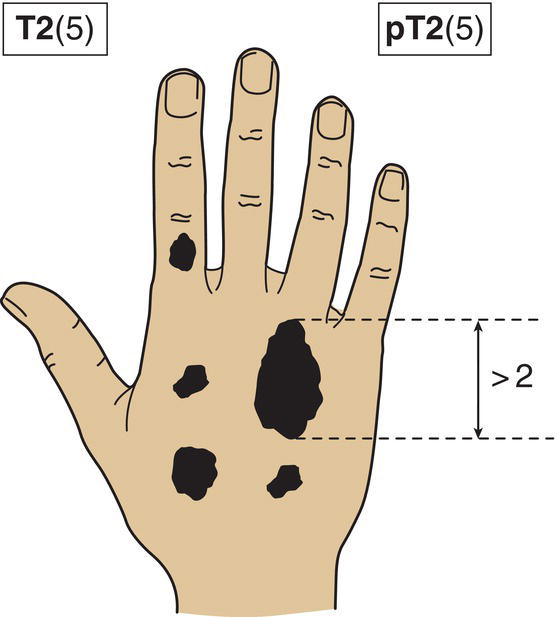
N – Regional Lymph Nodes
NX
Regional lymph nodes cannot be assessed
N0
No regional lymph node metastasis
N1
Metastasis in a single ipsilateral lymph node, 3 cm or less in greatest dimension
N2
Metastasis in a single ipsilateral lymph node, more than 3 cm but not more than 6 cm in greatest dimension, or in multiple ipsilateral lymph nodes, none more than 6 cm in greatest dimension, or in bilateral or contralateral lymph nodes, none more than 6 cm in greatest dimension
N3
Metastasis in a lymph node, more than 6 cm in greatest dimension
M – Distant Metastasis
M0
No distant metastasis
M1
Distant metastasis (Figs. 324, 325, 326, 327, 328)
pTNM Pathological Classification
pM1
Distant metastasis microscopically confirmed
pM0 and pMX are not valid categories.
pN0
Histological examination of a regional lymphadenectomy specimen will ordinarily include 6 or more lymph nodes. If the lymph nodes are negative, but the number ordinarily examined is not met, classify as pN0.
Summary
Stay updated, free articles. Join our Telegram channel

Full access? Get Clinical Tree



